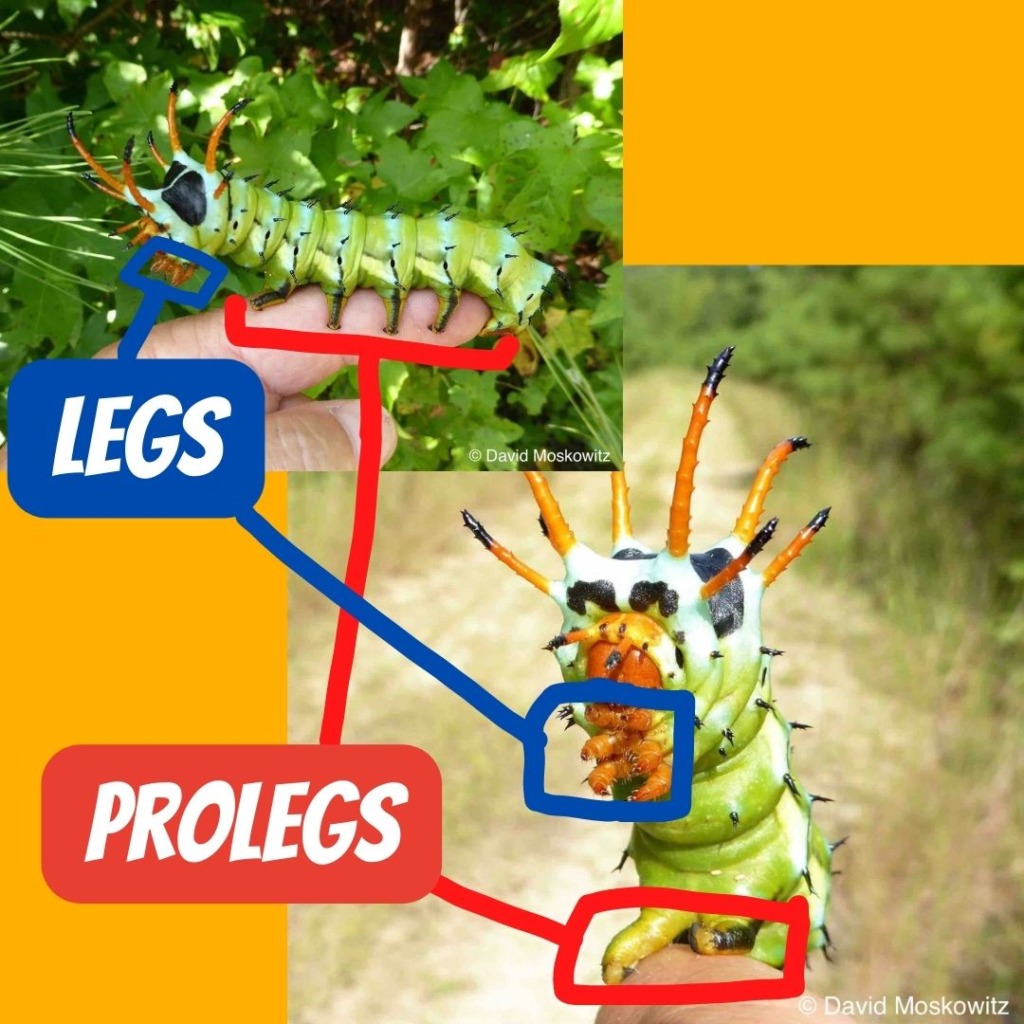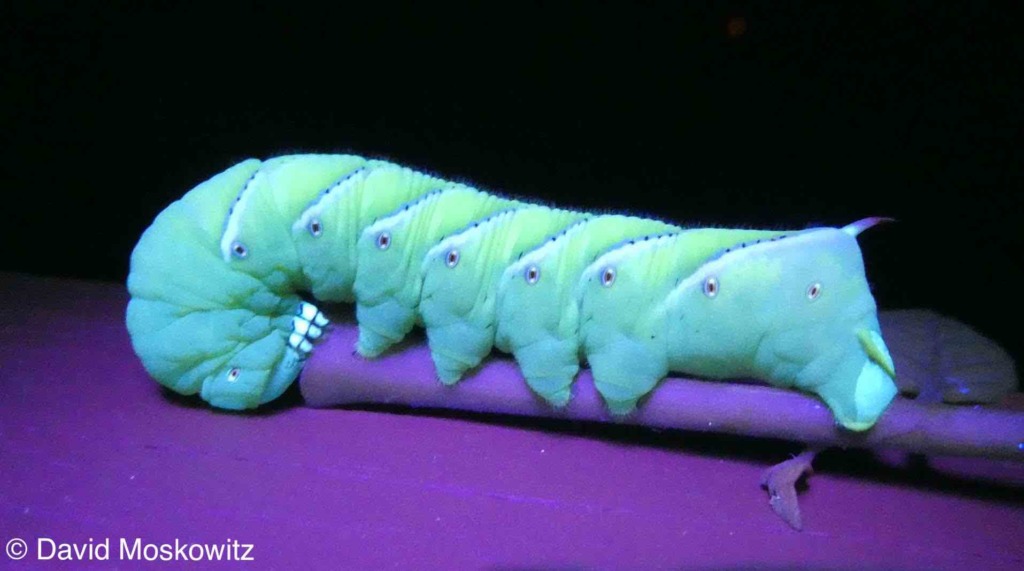Mongabay For Kids,
Edited by Amal Udawatta,
Have you ever wondered how many legs a caterpillar has or if caterpillar “feet” are sticky? We have! So we asked expert moth-er David Moskowitz (hand pictured) to answer our questions:
How many legs does a caterpillar have? Do they all have the same number of legs?
David: Most caterpillars, like all insects, have 3 pairs of legs (6 total legs), and these are located under the thorax near the front of the caterpillar. These are a caterpillar’s true legs. What makes them true legs is that they are segmented. But caterpillars also have something else special. They have prolegs on the abdomen. Usually there are five pairs (10 total prolegs). (Some caterpillars have fewer prolegs.)
Prolegs aren’t real legs. They are a fleshy unsegmented part of the abdomen. But they are critical for helping the caterpillar move. At the bottom of each proleg is a structure with a funny name – crotchet. Crotchets are a lot like Velcro, and by adhering to a surface help the caterpillar grasp. That attachment and muscles in the body move the prolegs like they are actual legs.
Is it safe to pick up caterpillars? What does it feel like to hold a caterpillar?
David: Some caterpillars are very fun and safe to handle. But others, have sharp spine or irritating hairs and can cause a strong painful and often burning reaction. So it’s best to only handle a caterpillar with someone who knows about them. Caterpillars are also very soft and squeezing them too hard or dropping them will injure them.



Comments
Post a Comment